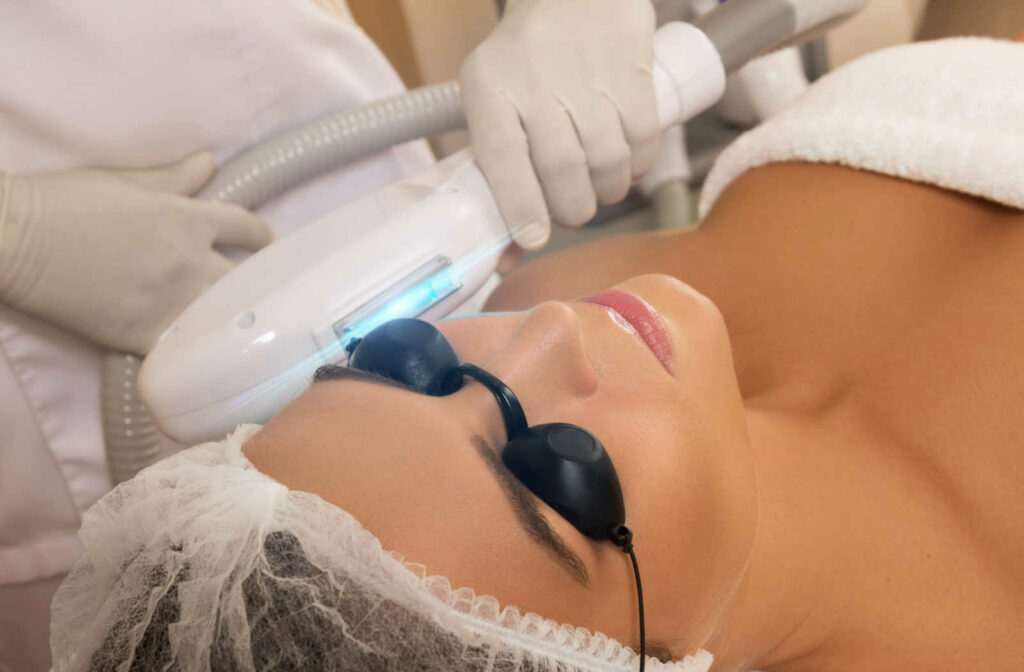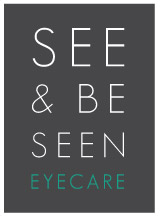If you’re experiencing dry, irritated eyes beyond typical dry eye symptoms, you may be struggling with blepharitis. One of the most common signs of blepharitis is RED and SWOLLEN eyelids. Unfortunately, the condition is chronic and many cases end up in multiple recurring styes.
Visiting your optometrist for intense pulsed light therapy is a proven treatment method to manage meibomian gland dysfunction that may be contributing to your blepharitis. Laser treatments are not the same as intense pulsed light therapy (IPL), and the advanced technology of IPL is typically favoured by optometrists that specialise in dry eye.
What Is Blepharitis?
Blepharitis is an inflammation of the eyelids that can lead to red, swollen, and irritated eyes. It’s common among those with skin conditions like rosacea, oily skin, or dandruff, and can cause the skin around the eyes to become flaky.
Blepharitis can be an uncomfortable condition, but despite its inflamed appearance, it’s not contagious. It affects the oil glands by blocking oil production and can cause dry eye disease.
Two Types of Blepharitis
Blepharitis is classified into 2 types: anterior blepharitis and posterior blepharitis.
Anterior blepharitis develops along the outside edge of the eyelid, along the lash line. It’s commonly bacterial due to skin problems such as dandruff. If the bacteria builds up, it can cause infection. There are also 3 subtypes of anterior blepharitis:
- Seborrheic blepharitis, which is often associated with dandruff
- Ulcerative blepharitis, which typically causes crusting around the eyes and eyelashes
- Demodex blepharitis is caused by mites, and it’s a common yet underdiagnosed type of blepharitis. Nearly 70% of individuals over the age of 30 have demodex!
Posterior blepharitis affects the inner rim of the eyelid. When the meibomian glands aren’t producing oil regularly, bacteria can grow and irritate the eyes. Dandruff, rosacea, and other skin conditions can also lead to blepharitis.
Symptoms of Blepharitis
Blepharitis can cause irritation and discomfort, and you may also notice symptoms like:
- Crusty eyelashes
- Feeling like something is in your eye
- Light sensitivity
- Watery eyes
- Red eyes
- Dry eyes
- Blurry vision
- Burning sensation
The type of blepharitis you’re experiencing may influence your symptoms. If you’re experiencing any signs of blepharitis, contact your optometrist to assess your eyes and begin treatment.
Causes of Blepharitis
Blepharitis can be triggered by a range of conditions, including:
- Meibomian gland dysfunction (MGD), a blocked oil gland
- Bacteria
- Hormone changes
- Viral infections
- Skin conditions such as eczema, rosacea, and seborrheic dermatitis
During a comprehensive eye exam, your optometrist can identify the true cause of blepharitis and use various treatment options to manage it, including intense pulsed light therapy.
Intense Pulsed Light Treatment for Blepharitis
IPL, or intense light therapy, is often used to treat dry eyes. Blepharitis and dry eye often co-occur when there are problems with tear evaporation or evaporative dry eye. When the meibomian glands are blocked or underproduce oil, it can cause dry eye disease and blepharitis.
What is Intense Pulsed Light Therapy?
IPL therapy uses calibrated light wavelengths to calm inflammation around the eyes and eyelids. The gentle heat emitted during the procedure melts the oils that may be blocking your meibomian glands and stimulate the production of this lubricating layer of your tear film.
Over the course of your IPL treatments, we can address your meibomian gland dysfunction, work to eliminate the blockages that cause dry eye, and help reduce the irritating symptoms of blepharitis.
What’s the Difference Between IPL & Laser Treatment?
IPL and laser treatments are similar, though a laser uses only one wavelength of light, whereas IPL uses various wavelengths.
IPL can cause less damage to the skin—the scattered light penetrates the dermis, the second layer of the skin, without affecting the epidermis, the top layer of your skin.
The Benefits of IPL for Blepharitis
Early evidence shows that symptoms of acute blepharitis can be significantly improved with a series of IPL treatments. Using IPL and manual gland expression in combination may improve meibomian gland function and improve symptoms of dry eye.
Additional benefits of IPL include:
- Quick treatment sessions
- Fast recovery
- Little to no discomfort during treatment
- Long-lasting results
- Aesthetic benefits
Depending on your unique case of blepharitis and ocular health history, your treatment plan may include fewer or more treatments than average. An initial consultation with our eye care professionals is critical to help us determine whether IPL is a beneficial treatment option for you.
Treat Your Dry Eye & Blepharitis
The team at See & Be Seen Eyecare is here to help create a personalized treatment for eye issues, including blepharitis. Schedule an appointment to start treating the root cause of your dry eye and blepharitis.





